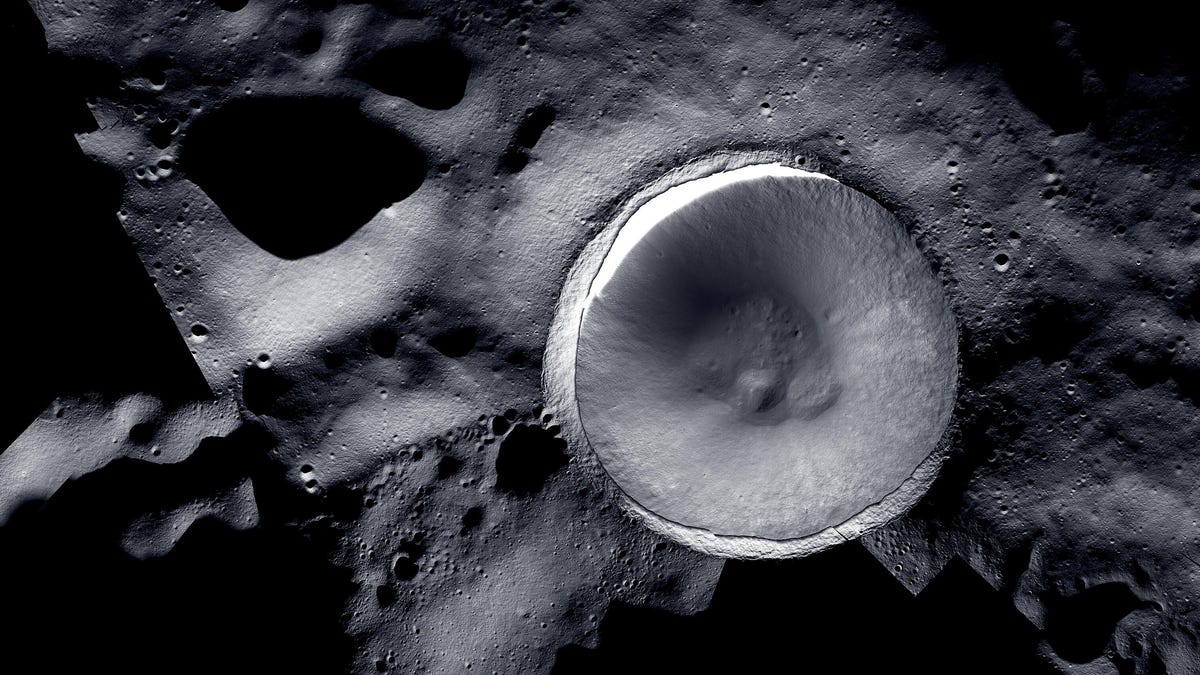NASA's New Moon Mosaic Lets You Peer Deep Into Shackleton Crater
A stunning tag-team image from two NASA moon cameras illuminates future human landing sites.

The depths of Shackleton Crater stand out in a NASA mosaic.
We're seeing the moon in a new light. A fresh NASA mosaic view of the lunar south pole region highlights a scenic crater and gives us a look at a prime area for future human exploration.
The mosaic combines imagery sent back from two different spacecraft in orbit around the moon. The Lunar Reconnaissance Orbiter Camera is aboard a NASA orbiter. ShadowCam, a NASA instrument, is in residence on the Korea Aerospace Research Institute's Danuri orbiter. Danuri is more officially known as the Korea Pathfinder Lunar Orbiter.
Explore the full NASA mosaic showing the depths of Shackleton Crater on the moon. Click to enlarge.
LROC sends back gorgeous views of the moon's surface while ShadowCam specializes in hard-to-see shadowed regions.
"ShadowCam is 200-times more light-sensitive than LROC and can operate successfully in these extremely low-light conditions, revealing features and terrain details that are not visible to LROC," NASA said in a statement on Tuesday.
Shackleton Crater, named for Antarctic explorer Ernest Shackleton, is permanently shadowed inside. Most images of this area of the moon show a dark void, but ShadowCam can see into the crater's interior. However, ShadowCam's superpower means it can't capture clean images of the more brightly lit surface. That's where LROC comes in. NASA said the combined view shows the region in "unprecedented detail."
The Artemis program is underway. It's aiming for what will be one of the biggest moments in human space exploration: the first landing of astronauts on the lunar surface since the Apollo era of the '60s and '70s. NASA is targeting the south polar region and has identified 13 candidate landing sites, several of which are located near Shackleton.
The southern end of the moon is exciting because it may harbor deposits of water ice. Water is difficult to transport across space in large quantities. Harvesting water on site on the moon would enable a steady human presence there and provide resources for making rocket fuel to power expeditions deeper into the solar system.
NASA already flew an uncrewed Artemis I test mission around the moon. Artemis II will send astronauts on a journey around our lunar neighbor. Artemis III, currently planned for 2025, will aim to put boots on the moon. Those future Artemis explorers might look at this image and see where they'll leave footprints one day.

